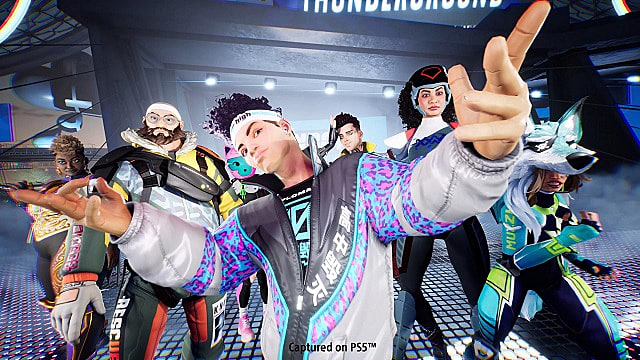Destruction AllStars launches with four modes, including a single-player mode. The primary one is a free-for-all where heroes compete for the highest score through destroying each others’ vehicles, among other things.
While Destruction AllStars features multiple vehicles, they all fall into three general types. The first is speed, and these cars obviously prioritize high mobility above all else. Nimble cars handle best of all, and heavy ones can take a beating at the expense of better movement.
It’s not game over if a hero gets launched from their vehicle. Running around the arena affords more chances to score, grab power-ups, or grab onto enemy vehicles and either wreck them or take control.
Each hero has a unique ability, such as spawning flames to add extra damage or activating a stealth option. Destruction AllStars also includes hero missions, pitting one hero against their rival and throwing some light back story in the midst of the arena’s chaos.
Carnado mode is much like normal mode, except players must bank their points in the stage’s tornado for them to count. Getting wrecked before cashing in means losing everything.
Stockpile is an evasion-based team mode. Wrecking an opponent scatters their car’s gears everywhere, but they can only be collected by exiting your own car. Teams control the map’s various banks by depositing their gear stash their, and whoever controls the most at the end of the match wins.
Finally is Gridfall, a mode where everyone has limited lives, the floor falls away, and the last driver standing wins.
Playing Destruction AllStars online earns players special coins they can exchange for cosmetics and emotes, and that’s it. There are no vehicle enhancements or anything other advantage Destruction AllStar coins can offer.
The State of Play promised more Destruction AllStar modes for sometime after launch. Destruction AllStars releases February 2 for PlayStation 5, following a brief delay, and is free for two months for PS Plus subscribers.
